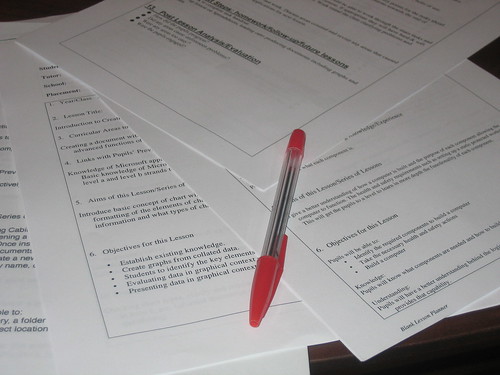Being a long-term sub
By Mary Bigelow
Posted on 2012-03-02
 I’m starting a long-term substitute position teaching high school chemistry until the end of the year. I’ve subbed for this teacher before, so I’m somewhat familiar with the school. But do you have any suggestions for starting in the middle of the year? How can I get to know the students quickly? Should I continue the existing classroom management practices or come up with my own?
I’m starting a long-term substitute position teaching high school chemistry until the end of the year. I’ve subbed for this teacher before, so I’m somewhat familiar with the school. But do you have any suggestions for starting in the middle of the year? How can I get to know the students quickly? Should I continue the existing classroom management practices or come up with my own?
— Carrie from New Mexico
In the case of a teacher taking a leave of absence, some schools encourage (and might even pay for) the substitute to come in for a few days ahead of time to become familiar with the teacher’s classroom routines. It would also be helpful for you to meet with the teacher and discuss her grading practices, the lab safety contract the students (and parents) have signed, her use of science notebooks, students’ IEPs, and any questions you may have . Find out if she would like you to continue with class blogs, wikis, or other online projects (you’ll need passwords and account information). Ask the teacher or department chair to give you a tour of the lab and stockroom to see where and how materials and equipment are stored and for a refresher on the safety equipment in the lab. You’ll also need access to the storeroom inventory and material safety data sheets. Ask the technology coordinator for a school email address and passwords to any programs needed attendance, grading, lesson planning, or communications.
The teacher or department chair should also share the curriculum you’ll be expected to address during your time. Ask the teacher if she can share resources for these topics (e.g., teacher manuals, assignments, assessments, suggested lab activities, and presentations). Find out if you’ll able to contact the teacher by email or phone if you have any questions or if she would like updates. Also find out if the school will assign you a mentor or go-to person if you have questions or concerns.
Stepping into the classroom in the middle of the year is challenging. Even though the students know you from your subbing experiences, you may not know all of them. Treat the first few days as if they were the beginning of the school year. Introduce yourself and share a little bit about your background. (In my school, the principal would introduce the long-term sub to the class, reinforcing the idea that the sub was now part of the faculty.) Ask the students to introduce themselves so you can note their nicknames and correct pronunciation of their names. If the teacher has an established seating chart, use it at least until you can connect names and faces. If the teacher did not have a chart, create one to help you learn the students’ names. Review the safety procedures and rules.
Ask each student to record data on an index card: name, birthday, interests/hobbies, school activities, out-of-school activities (e.g., jobs, community organizations, volunteer work), and other conversation-starters. (Use a different color card for each class.) Then for each class each day, choose a few cards and make a point to interact with these students. During the class period, greet these students by name at the door, call on them for answers or to share a thought, or interact with them during seatwork or groupwork. The cards can also be used to randomly select a student for an answer or a job, ensuring that it’s not just the hand-raisers or those in the front of the classroom who participate.
Some other ways to get to know students:
- Greet all students at the door with a brief comment or word of welcome. I would stand right inside my door so that I could keep an eye on the students already in the room, especially if lab equipment was in place.
- Get to know students in a different setting by attending school functions and events.
- Consider having lunch with students or talking to them in the lunch line.
In terms of classroom management, I’d keep using the existing routines, unless there are those you cannot live with or those that are ineffective or unsafe. Be sure to discuss any changes with the students, and be prepared for when they say “that’s not the way we did this before.” You may need to model the changes you want to make.
Keep a diary or log of your experiences and reflect on these as you apply for other positions next year.
Good luck!
Photo: http://www.flickr.com/photos/daviddmuir/1410227652/sizes/m/in/photostream/
Disclaimer: The views expressed in this blog post are those of the author(s) and do not necessarily reflect the official position of the National Science Teaching Association (NSTA).


